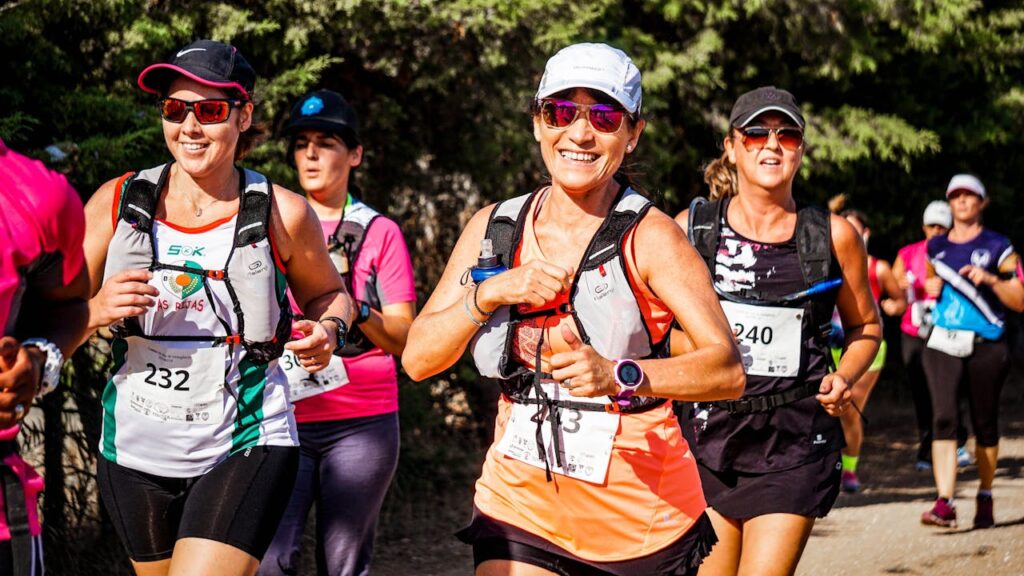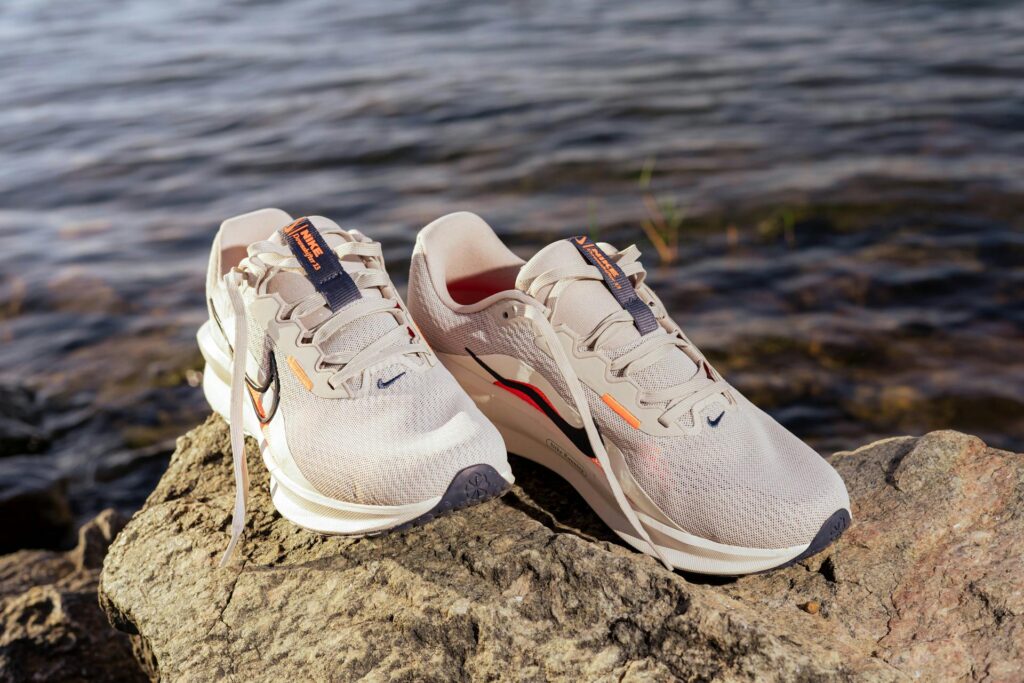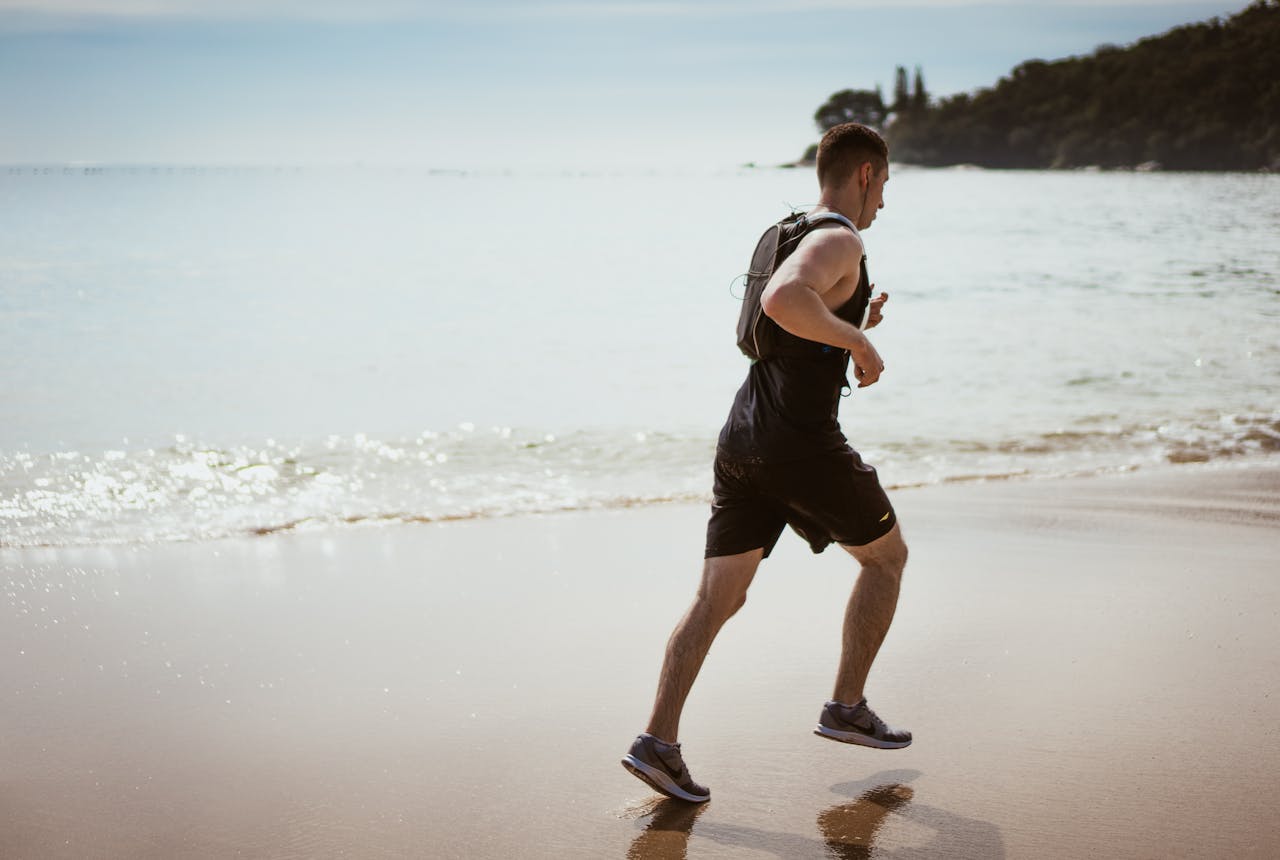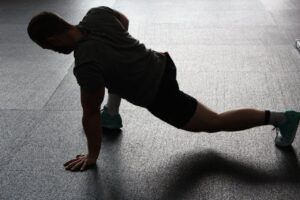Running can greatly improve your health and fitness. It’s also a great way to try something new. As a beginner, you’re starting a journey that will push you in many ways. But the benefits can change your life for the better.
This guide will give you everything you need to start running. We’ll cover how to think positively, pick the right gear, and create a training plan. By the end, you’ll know how to start running safely and successfully.
Key Takeaways
- Running can improve overall health and fitness
- Developing the right mindset is crucial for beginners
- Choosing the proper gear can enhance your running experience
- Building a progressive training plan is key to success
- Maintaining proper running form and technique can prevent injuries
Embracing the Runner’s Mindset
Before you start running, it’s key to have the right mindset. Overcoming mental hurdles and setting achievable goals are crucial. These steps will help you become a confident and passionate runner.
Overcoming Mental Barriers
Starting out, many new runners face self-doubt and fear of failure. It’s normal to feel nervous about how to start running. But, focus on learning and celebrating small wins. Remember, everyone begins at some point, and with practice, you’ll get stronger and more confident.
Setting Realistic Goals
Setting goals is a great way to stay motivated. Be honest with yourself and aim for goals you can reach. Start with small goals, like running a 5K or a certain distance. Then, move on to bigger challenges. This keeps you moving forward and avoids feeling stuck.
With a positive mindset and clear goals, you’re on your way to becoming a dedicated runner. Stay focused, celebrate your achievements, and enjoy the journey!

Essential Gear for Beginner Runners
Getting the right running gear is key for comfort and performance. You’ll need the right shoes, clothes, and accessories. Let’s look at what you need for your runs.
Choosing the Right Running Shoes
Finding the right running shoes is crucial. Look for shoes with good cushioning and support. They should match the type of running you do.
Try on different shoes to find the best fit. Choose one that feels right and supports your feet well.
Comfortable Clothing
- Moisture-wicking fabrics: Choose clothes that keep you dry and comfy.
- Breathable and lightweight: Pick clothes that let air in and don’t weigh you down.
- Weather-appropriate: Wear layers or light jackets for changing weather.
Essential Accessories
- Running Socks: Get good, moisture-wicking socks to avoid blisters.
- Running Watch: A watch helps track your pace and distance.
- Hydration Gear: Use water bottles or packs to stay hydrated.
| Gear Item | Importance for Beginner Runners |
|---|---|
| Running Shoes | Provides essential cushioning and support for your feet, reducing the risk of injury. |
| Moisture-wicking Clothes | Helps keep you dry and comfortable, preventing chafing and discomfort during your runs. |
| Hydration Gear | Ensures you stay hydrated, which is crucial for maintaining energy and performance, especially during longer runs. |
Investing in good running gear is important. It makes your runs more comfortable and enjoyable. Find gear that fits your needs and preferences. Don’t hesitate to try different options until you find the best.

How to start running
Starting to run can be thrilling, especially for beginners. It’s important to have a plan to ensure a good start. Gradually increase your runs to build endurance and avoid injuries.
Building a Progressive Training Plan
Begin with short, easy runs and slowly add more distance and time. This helps your body get stronger and more fit. Here’s how to make a good training plan:
- Start with a 10-15 minute run, focusing on a comfortable pace.
- Every week, add 5-10 minutes to your runs to get used to more effort.
- Try interval training to boost your speed and endurance.
- Add hills to your runs to challenge your muscles and heart.
- Pay attention to your body and take rest days when needed to avoid injury.
Being consistent is crucial. Stick to your plan and slowly increase your runs. With time and effort, you’ll become a confident runner.
| Week | Duration | Intensity |
|---|---|---|
| 1 | 10-15 minutes | Comfortable pace |
| 2 | 15-20 minutes | Comfortable pace |
| 3 | 20-25 minutes | Interval training |
| 4 | 25-30 minutes | Interval training with hills |
Proper Running Form and Technique
Learning the right how to start running form is key to avoiding injuries and running better. We’ll cover the basics of good running form, like body posture, stride, and foot strike. This will help you build a solid base and boost your running skills.
Proper Posture and Stride
Having the correct how to start running posture is vital for safe and effective running. Here are some tips for the right running posture:
- Stand tall with your shoulders back and your chin slightly tucked.
- Engage your core muscles to maintain a straight, upright posture.
- Avoid excessive leaning forward or backward, which can strain your back and neck.
Your stride length is also crucial in how to start running. Aim for a stride that’s comfortable, with a mid-foot strike and a cadence of about 180 steps per minute. Taking too long of a stride can cause heel striking and harm your joints.
| Proper Posture | Improper Posture |
|---|---|
| Upright, engaged core, shoulders back | Hunched forward, shoulders rounded |
| Relaxed, mid-foot strike | Heel striking, overstriding |
By focusing on your posture and stride, you can how to start running create a more efficient and injury-resistant running form. This will help you start your running journey on the right foot.
Preventing and Managing Common Running Injuries
As a beginner runner, knowing about common injuries is key. Running can be tough on your body. But, with the right steps, you can avoid many problems and keep running without pain.
Shin splints are a common issue, causing pain in the lower leg. To avoid it, start slowly, wear good shoes, and do leg exercises. Runner’s knee happens from too much running or bad form. Warm up well, cool down, and strengthen your legs and core to prevent it.
Plantar fasciitis is another common problem, affecting the foot. Stretch, wear supportive shoes, and try low-impact activities to help. These steps can ease the pain.
To stay injury-free, listen to your body and gradually get better. Mix strength training, flexibility, and rest into your routine. This way, you can enjoy running without worrying about injuries.
Tips for Injury Prevention and Management
- Gradually increase your mileage and intensity to avoid overuse injuries
- Wear properly fitted, supportive running shoes
- Incorporate strengthening exercises for your lower legs, core, and hips
- Develop a consistent warm-up and cool-down routine
- Listen to your body and address any pain or discomfort promptly
- Incorporate cross-training activities to reduce impact on your body
- Prioritize rest and recovery between runs to allow your body to heal
Follow these tips to stay safe and successful as you start running. Being proactive about injury prevention is crucial.
Fueling Your Body for Running Success
As a beginner runner, it’s key to feed your body right and stay hydrated. The right foods and water can give you more energy, help your muscles recover, and make you run better.
Hydration and Nutrition Tips
To fuel your body for running success, follow these tips:
- Stay Hydrated: Drink water before, during, and after your runs. This helps replace lost fluids. Drink at least 8 ounces of water 30 minutes before running, and keep drinking water during your workout.
- Fuel with Carbohydrates: Carbs are your main energy source for running. Eat complex carbs like whole grains, fruits, and veggies before and during your runs. They give you lasting energy.
- Protein for Muscle Recovery: After running, eat protein-rich foods like lean meats, eggs, or plant-based proteins. They help fix and strengthen your muscles.
- Healthy Fats for Endurance: Add healthy fats like avocados, nuts, and olive oil to your diet. They help with long-term energy and endurance.
By focusing on good hydration and eating nutrient-rich foods, you’ll fuel your body for running success. This will help you get the most out of your running program for beginners.
Exploring Different Running Surfaces
As a beginner runner, you can try out many running surfaces. Each one has its own benefits and challenges. You might like running on a treadmill, a road, or a trail. Knowing the good and bad of each can help you train better and enjoy running more.
Road Running
Many beginners choose to run on paved roads. The surface is smooth, making it easy to run. Roads are also well-kept, making them easy to find and use.
But, running on hard surfaces can hurt your joints. So, it’s key to wear good running shoes. Start slowly to avoid getting hurt.
Trail Running
Trail running is great for those who love adventure and nature. Trails are softer, which can be easier on your body. Plus, the scenery is always changing.
But, trails can be tricky. They have hills, uneven paths, and things to watch out for. Start with easy trails and get better slowly.
Treadmill Running
The treadmill is perfect for indoor running. It lets you control the slope and speed. This is great for training and getting stronger.
But, treadmill running can feel the same every time. To make it more like outdoor running, try changing the incline and speed.
Choosing where to run depends on what you like and what’s around you. Try different places and see what works best for you. This way, you can stay excited and safe while running.
Staying Motivated and Tracking Progress
Keeping motivated and tracking your progress are key to a successful running program for beginners. It’s important to use strategies that keep you excited and measure your success.
Setting achievable goals is a great way to stay motivated. It could be running a certain distance, getting faster, or exploring new routes. Celebrate every small win to keep your motivation high.
Finding a supportive running community can also help a lot. Joining a local group or connecting with other beginner runners online can offer friendship, accountability, and inspiration.
To track your progress, consider using a fitness tracker or a running app. These tools give insights into your runs, like distance and pace. Keeping a running log, digital or analog, also helps you see how far you’ve come.
Remember, the most important thing is to find what works for you. Try different methods, celebrate your achievements, and be part of a supportive community. With hard work and a positive attitude, you’ll reach your running program for beginners goals.
Conclusion
You’ve now reached the end of our Beginner’s Guide to Running. By following the tips and strategies in this guide, you’re on your way to a rewarding running routine. This routine will improve your fitness, health, and sense of accomplishment.
Remember to be patient with yourself and listen to your body. Most importantly, enjoy the journey. Whether you’re starting to run for the first time or getting back into it, this guide has given you the knowledge and tools you need.
Running is a transformative experience that offers many physical and mental benefits. Embrace the runner’s mindset and set realistic goals. With the right gear, proper form, and a good training plan, you’ll be on your way to success.



